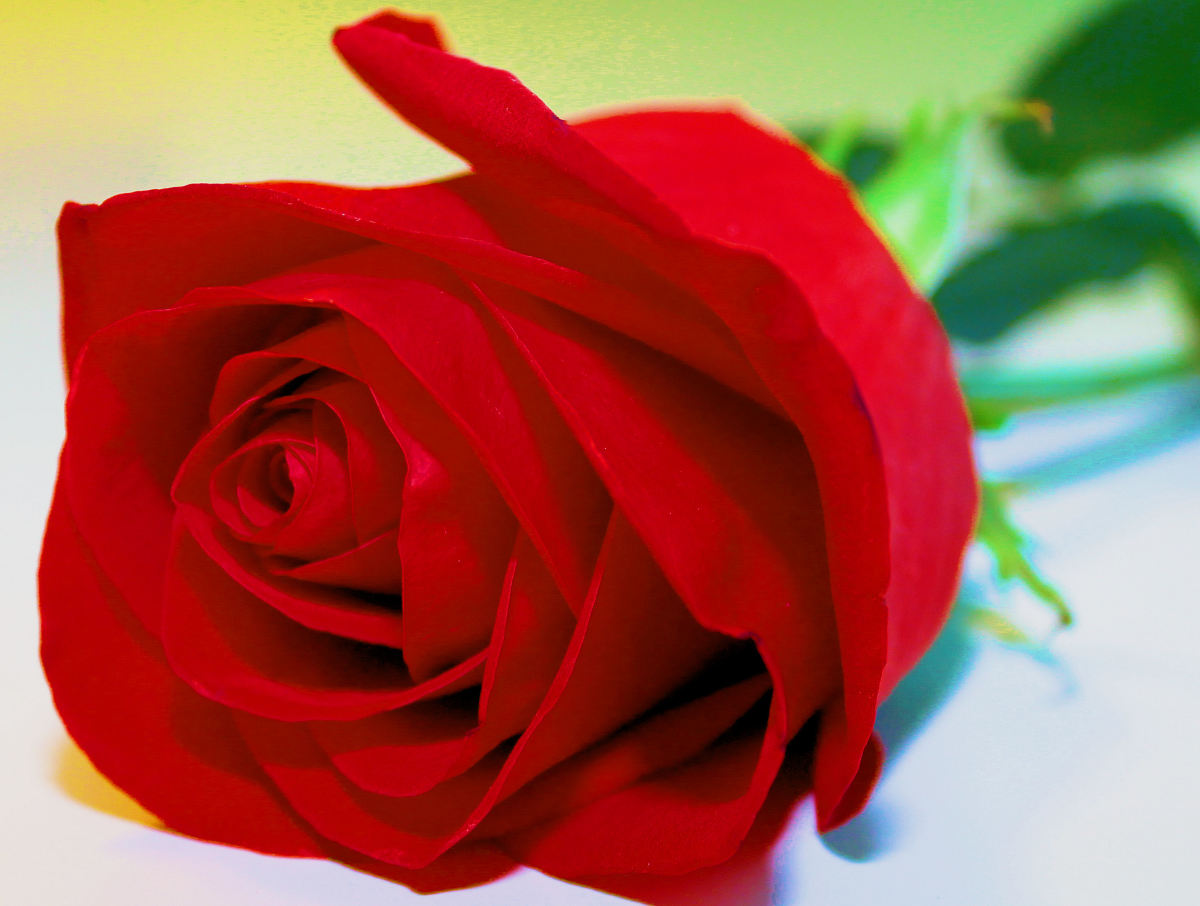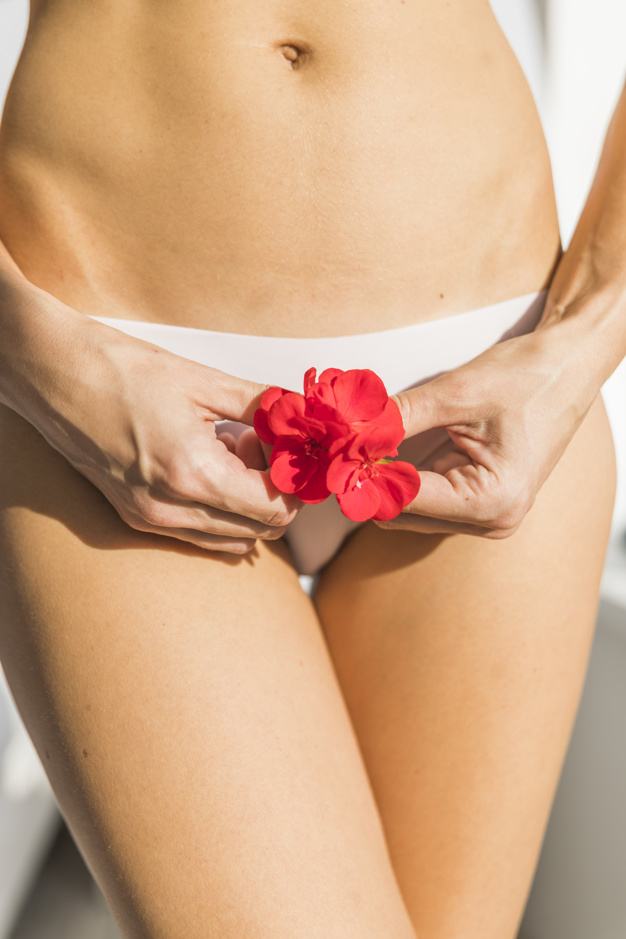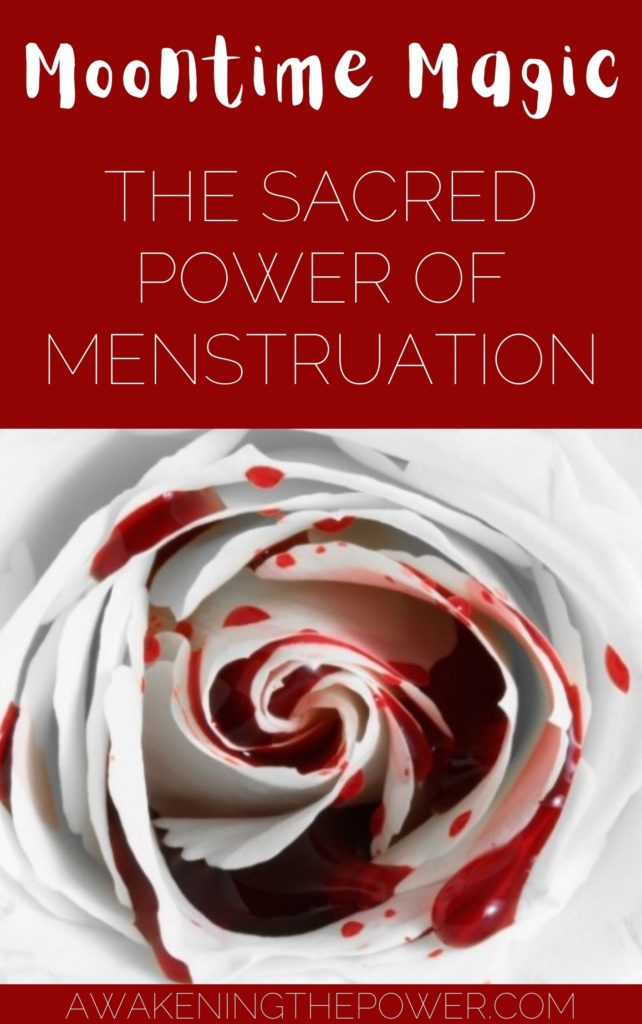Ancient cultures considered menstruation, and especially menstrual blood, sacred. They celebrated it as a manifestation of a woman’s connection to Earth and to life itself.
Nowadays we think of our periods as an annoyance at best, and a taboo at worst. It’s dirty, it’s uncomfortable, and you can’t wear white. We even call it “the curse.”
What a departure from the ancient wisdom! So how did we come to regard our “moontime” as the punishment and associate it with shame and unholiness?

My First Menstrual Period
I remember the day I got my first period.
I was 14 (a late bloomer), and from the educational booklets my mother planted in my room I knew that something bloody and messy was going to happen soon, and somehow I’ll become a woman.
So when it happened, I experienced a rush of exhilaration. I felt a peculiar mixture of pride and shame, horror and curiosity, and even a sense of achievement.
Somewhere in the recesses of my brain, I remembered that it was a good thing. Perhaps, even a cause for celebration.
That initial excitement was soon replaced with annoyance, shame and general discontent about being a woman: Why do I have to go through this? I hate this. Gross. Oh God, period again, already?!
The sense of shame deepened when I realized that I had to do everything in my power to prevent my monthly “condition” from leaking out, pun intended.
And it’s not like someone told me that the menstrual cycle was inherently bad or shameful — I just knew it.
The Origin of Cultural Taboos About Menstruation
Cultural taboos about menstruation go back to the Judeo-Christian religious doctrine that sought to vilify the Divine Feminine.
Not only did the creation myth depict the woman as an inferior creature (made from a man’s body part), it also reduced the innately female manifestations of the divine fertility to childbirth pain and sin.
In the middle ages, the Church saw menstruation as a possession by the devil. Young girls were beaten with sticks until the evil spirits left their bodies.
We may consider it bizarre and cruel, but even now many cultures in the world teach women (and men!) that menstruating women are dirty.
They shouldn’t cook — the food will go bad. They shouldn’t touch others — it will “infect” them. And they shouldn’t come to places of worship — it will offend God.
So why talk about this? Women don’t talk about their periods. We carry on stoically and just wait for the mess to be over, or fight the “symptoms” with PMS pills.
We have to talk about it because our menstrual cycle is not just an inconvenience. There’s an ancient healing power that stems from our womanhood.
If we can relinquish the shame and embrace that power, we can heal more than ourselves.

Thought-Provoking Facts about the Sacred Power of the Menstruation
I want to share with you some enlightening things I discovered about the menstrual cycle. I hope that it will inspire you to appreciate your womanhood more, see the magic in it, and use it as a vehicle for healing and self-empowerment.
- A great number of ancient cultures considered menstruation sacred. In fact, a menstruating woman was believed to be the Goddess.
- Various creation myths from around the world refer to the “moonblood” of the Goddess as the supreme primordial substance that gave life to mankind, and to all of the cosmos.
- Early Christian sects used menstrual blood as part of their worship practices. They believed that the “drink of immortality,” made from menstrual blood, had healing regenerative properties. Eventually, the Church forbid the ritual use of menstrual blood and replaced it with symbolic drinking of Jesus’s “blood.”
- Hindu tradition (before patriarchal Sanskritic Hinduism took over) regarded women as very powerful creatures: so powerful that they have to be “drained” of their blood monthly to avoid accumulating too much shakti (sacred power associated with life force and sexuality). “If it were not for her monthly period, five men could not hold one woman down,” says an Ayurvedic practitioner.
- Native Americans had an entirely different approach to menstruation than their European counterparts. Menstrual huts, where women spent their “moontime,” were places of purification, communion with other women, and with the spirits. Some tribes revered menstruating women as guides and connectors to the spiritual realms. The whole village celebrated a young girl’s first menstruation, announcing her ascension to womanhood.

Ancient And Modern Ways to Honor Your Menstrual Period
- The veil that separates our world from other dimensions is lifted during the menstrual period. This is the time to withdraw into yourself, refrain from your normal activities and listen, meditate, contemplate. You can gain great insights during this time.
- Journaling during (and before) your period is another great way to find the answers you’ve been looking for. The wisdom and creativity are literally flowing through you. So write, paint, use whatever medium works best for you to express your feelings, thoughts, and intuitive revelations.
- Modern religions like Wicca encourage women to use this highly valuable time of their periods to release past pain, regrets, hangups, and to engage in a practice of conscious creation of a new reality for the coming month. The rule of thumb on conscious creation is: think about what you want, not about what you don’t want. And visualize, visualize, visualize. This is when your spiritual energies are at their highest; use them wisely.
- Perhaps the most important thing you can do during your menstrual period is to offer some of your blood to the earth.

The Offering of Menstrual Blood to the Earth
The message from Barbara Marciniak calls on all women to heal the world conflict through our menstrual blood.
Some of you may know the name Barbara Marciniak from her wonderful books like “Bringers of the Dawn“ or “Family of Light”, which are channelings from the Pleiadian civilization. Some also recognize her as one of the high priestesses in the United States.
Although the idea may seem bizarre at first, according to Marciniak (and Rigoglioso), menstrual blood is very effective in attracting healing energies.
Using menstrual blood ritually as an offering to the earth was a common practice among Tibetan lamas, Native Americans, and Gnostic worshipers throughout the ages.
“Women should pour their blood onto the earth at this time, with the stated intention of calling the energies of the goddesses and helpful ancestors to the planet to end violence and the effect of the healing of all those who would perpetrate the violent acts and all who are suffering as a result of violence.”(Marguerite Rigoglioso, 2001)
There is a powerful multilevel connection that takes place when you offer your blood to the earth.
It’s very easy to do: soak your pads or tampons in warm water for a few minutes, then dispose of them as usual (or if you’re using a menstrual cup or reusable pads, you know what to do).
Take the water to the yard or any other place in nature, or perhaps, a place that has a special meaning to you. State your intention. You can improvise the words, for example:
With love and gratitude, I offer my blood to the earth as a symbol of our unbreakable bond. Let the energies of the Goddess be invoked at this time for the healing of the planet and all living beings. Amen.
Final Thoughts on the Sacred Power of Menstruation
Understanding and embracing our menstrual cycles have a lot to do with the ability to understand the laws of nature and embrace the changes that bring new energies into our lives.
Yet the power of our blood is the most forgotten, corrupted, and besmirched aspect of a woman’s essence. Reclaiming that power is why we have to change our attitudes about our periods.
Menstruation is not a mere annoyance, an unwelcomed guest that just won’t leave.
It’s an opportunity to connect with the Goddess, to make an offering to the earth, and at the very least — a great excuse for some quality “me” time.

Resources
- A call to action for women who bleed (please pass on) by Marguerite Rigoglioso
- The Magic of the Menstrual Cycle by Cat Stone
- The Sacred Power Of Menstrual Blood by Seren Bertrand
- Menstruating Women/Menstruating Goddesses: Sites of Sacred Power in Kerala, South India, Sangam Era (100-500 CE) to the Present by Dianne E. Jenett, Ph.D.



